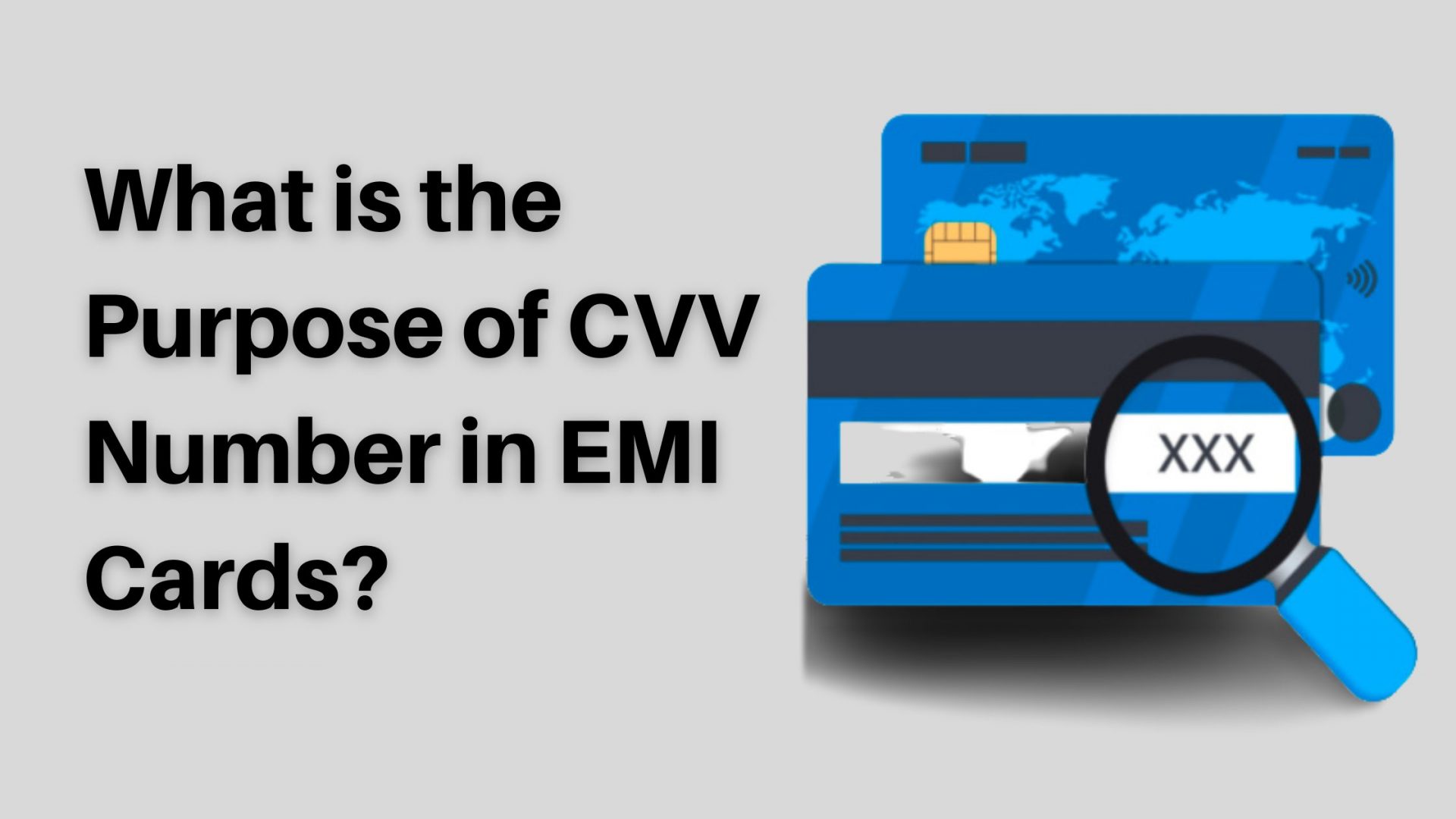Last Updated on March 11, 2024 by admin
The CVV number, often known as a card verification value, is a three-digit identifier printed on the back of a credit or debit card. It also goes by the name “card security code” or “card verification code,” and it serves as an extra security measure to safeguard your information when you use your card for online purchases or at POS machines. The CVV code, which is different from the card’s PIN, is necessary for online purchases. To avoid being a victim of cybercrime, cardholders must safeguard their CVV and never divulge it to anyone.
What is the CVV number on an EMI Card?
Card Verification Value, or CVV, refers to the magnetic strip on the back of your card. While your information is stored on the magnetic strip, the back of your card is given a unique 3- or 4-digit number. This CVV number is a decimal representation of a code uniquely allocated to your data and is known only to the company that issued your EMI Card. As a result, every time you swipe your EMI Card, the information on the magnetic strip is utilised to prove your identity, and your CVV does the same, ensuring the security of your transaction. Card Security Code (CSC) and Card Verification Code are other names for your EMI Card’s CVV number (CVC).
Where to find the CVV number on the Card?
Accessing the three-digit CVV code is simple because it is printed on the actual EMI Card. The CVV number can be located on the back of your EMI Card. However, you cannot find the Insta EMI Card CVV number on Insta EMI Card as it does not possess the number on its back.
Purpose of CVV number in EMI Cards
Inputting your CVV number during an online purchase demonstrates that you hold the card, which helps decrease fraud. Furthermore, even with knowledge of your EMI Card number, this CVV number cannot be deduced or faked. Additionally, it cannot be copied as your card is being swiped. Additionally, if the information on your card’s magnetic strip changes, the transaction is refused with the error “damaged card.” Therefore, your CVV protects you from fraudulent transactions in a variety of ways.
Additionally, you need not be concerned about a data breach because merchants cannot keep your CVV number in accordance with Payment Card Industry Data Security Standards. Thus, each new transaction requires you to enter the CVV code, even if you have saved your EMI Card number and other information on a seller’s website. Because of this, you will notice the CVV area is blank even on commonly used apps where you select to save your card information.
Even if the CVV on the card is a great security feature, phishing scams and other online crimes can still compromise your EMI Card. This is due to the fact that not all merchants want the CVV code from an EMI Card to complete a transaction. Therefore, a fraudster or hacker might easily use your EMI Card information to make unauthorised purchases on websites that do not require the CVV.
When applying for an EMI Card, seek measures that protect your finances with numerous layers of security to prevent scenarios like these. For example, the Bajaj Finserv RBL Bank SuperCard has robust security measures. If your SuperCard is lost, you can instantly deactivate, block, and unblock it using the RBL MyCard App. Additionally, you are compensated for fraudulent SuperCard transactions by zero-fraud liability insurance. Without sacrificing any benefits in the process!
How to get an Insta EMI Card CVV number?
Unlike credit and debit cards, the Bajaj Finserv EMI Network Card lacks a CVV number. Instead, you can use the card’s distinctive Bajaj Finserv EMI Network Card number to verify your purchases. You will not get an Insta EMI Card CVV number on your Insta EMI Card. This is because Insta EMI Card does not include a CVV or code verification value. Instead, the Bajaj Finserv Insta EMI Card has a unique card number that must be entered during the payment procedure. After you provide the information, the amount is debited from your EMI Network Card’s available credit limit.
You can check Bajaj Finserv Insta EMI Card details by following these steps:
1. Via Bajaj Finserv app:
- Step 1: From the PlayStore or AppStore, download the Bajaj Finserv app.
- Step 2: Register using the app.
- Step 3: Log in to your account and select “EMI” from the menu.
2. Through Bajaj customer Portal: My Account
- Step 1: Go to the Bajaj My Account client portal
- Step 2: Enter your customer ID, password, registered phone number/email ID, and OTP to log in.
- Step 3: Select “My Relations.”
- Step 4: Select “EMI Card.”
3. Via SMS:
You can also send an SMS to request your Bajaj Finserv EMI Network Card number. What you must do is as follows:
- Step 1: Send a text message with the subject “EMICARD.”
- Step 2: Send it to 92275 64444 from your registered mobile number.
Apply for your Bajaj card online to avail benefits and attractive deals by Bajaj Finserv.

